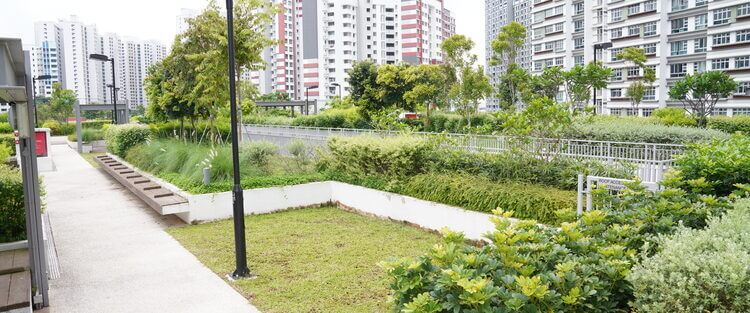
Outdoor landscaping is an artful endeavor that transforms the exteriors of our homes into captivating and inviting spaces. Whether you have a small backyard, a vast garden, or a cozy patio, the right landscaping can elevate the aesthetics and functionality of your outdoor living areas. In this blog, we’ll explore the significance of outdoor landscaping and how it can enhance your home’s overall appeal. We’ll delve into some practical ideas and techniques, supported by expert advice and credible sources, to create a harmonious blend of nature and design in your outdoor spaces.
1. The Importance of Outdoor Landscaping
Outdoor landscaping is not merely about arranging plants and flowers; it’s about creating a welcoming environment that reflects your personal style and complements your home’s architecture. A well-designed landscape can increase your property’s value and curb appeal significantly.
2. Integrating Nature and Design
An effective outdoor landscaping plan balances the natural elements with carefully planned design features. Utilize the existing topography to its advantage, incorporating elements such as trees, slopes, and water features. A mix of softscape (plants, trees, and flowers) and hardscape (stones, pathways, and outdoor structures) can create a visually appealing and functional landscape. The proper arrangement of these elements can evoke a sense of harmony and tranquility.
3. Native Plants and Biodiversity
When selecting plants for your outdoor landscaping, consider using native species. Native plants are adapted to the local climate and require less maintenance, water, and pesticides, making them eco-friendly choices. Furthermore, they promote biodiversity by providing a habitat for local wildlife, including birds, butterflies, and bees. The National Wildlife Federation encourages the use of native plants to support local ecosystems
4. Sustainable Landscaping Practices
As environmental consciousness grows, so does the emphasis on sustainable landscaping practices. Implementing eco-friendly techniques like rainwater harvesting, drip irrigation, and using permeable materials for pathways can conserve water and minimize the environmental impact. The Environmental Protection Agency (EPA) provides valuable resources and guidelines on sustainable landscaping
5. Incorporating Outdoor Living Spaces
Outdoor landscaping goes beyond pretty gardens; it should also provide functional spaces for leisure and entertainment. Integrate seating areas, pergolas, and outdoor kitchens to create cozy spaces for socializing and relaxation. According to the American Society of Landscape Architects (ASLA), well-designed outdoor living spaces are among the top trends in landscaping
6. Seeking Professional Advice
While DIY landscaping projects can be fun, seeking professional advice is essential for more complex projects. Landscape architects and designers possess the expertise to envision your dream outdoor space and execute it efficiently. They can ensure that your landscaping not only looks appealing but also functions optimally and adheres to local regulations and building codes.
Conclusion
Outdoor landscaping is an invaluable investment that enriches your home and lifestyle. By thoughtfully blending nature’s beauty with well-planned design, you can create an outdoor oasis that brings joy to your daily life and impresses visitors. As you embark on your landscaping journey, remember to incorporate sustainable practices and native plants to benefit both the environment and local wildlife. Seeking professional advice can also take your outdoor space to new heights. So, roll up your sleeves, embrace your creativity, and let the outdoor landscaping process begin!

